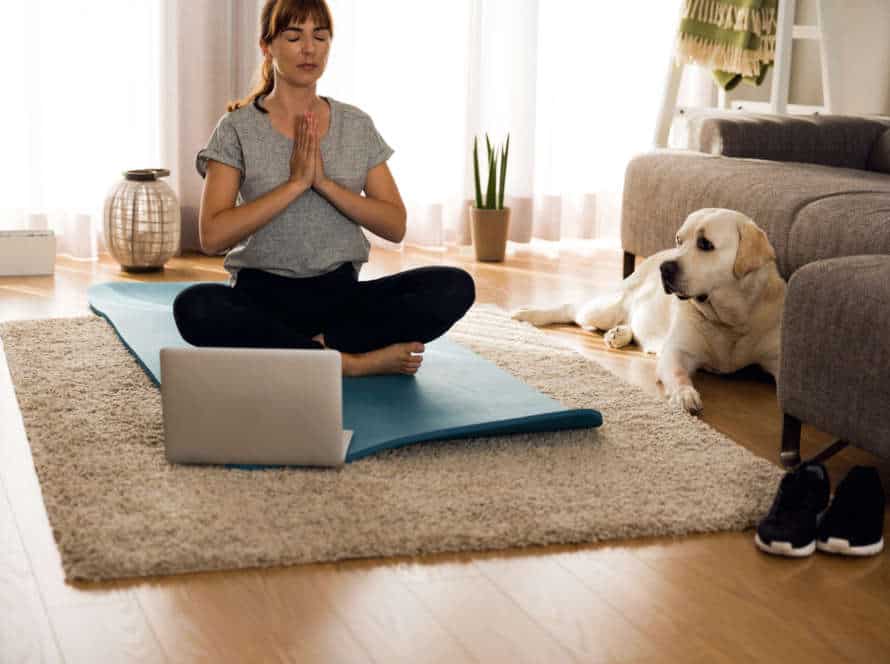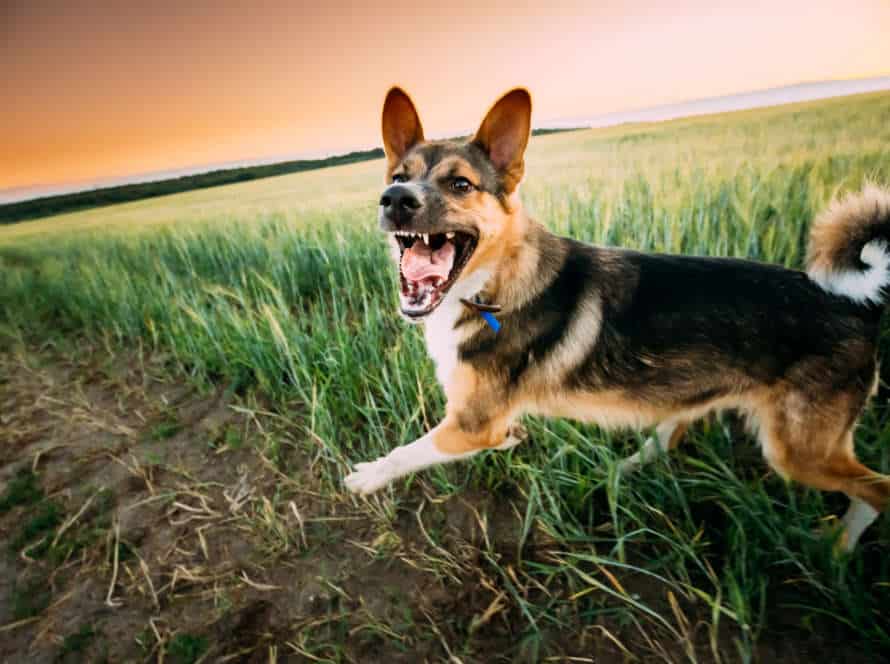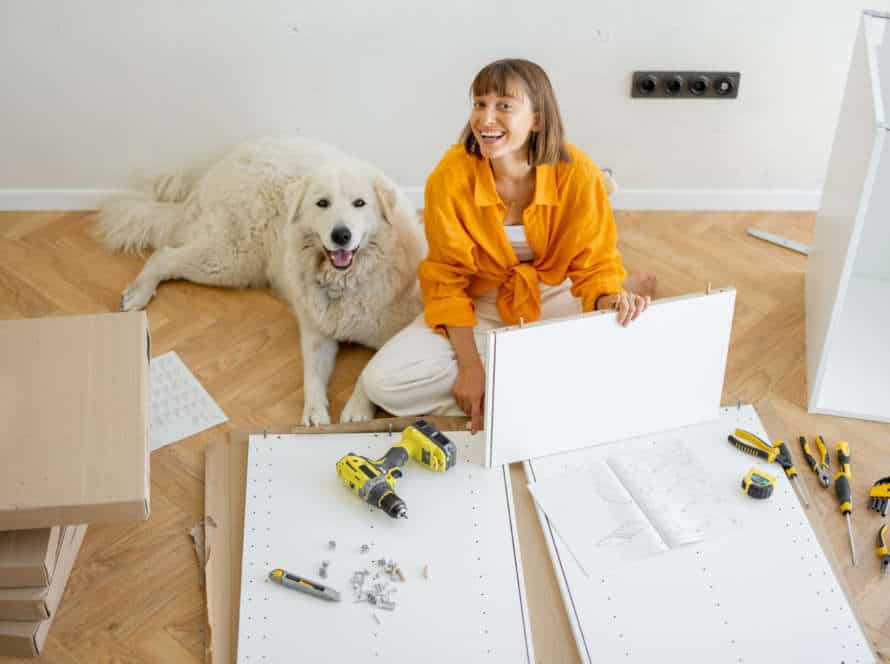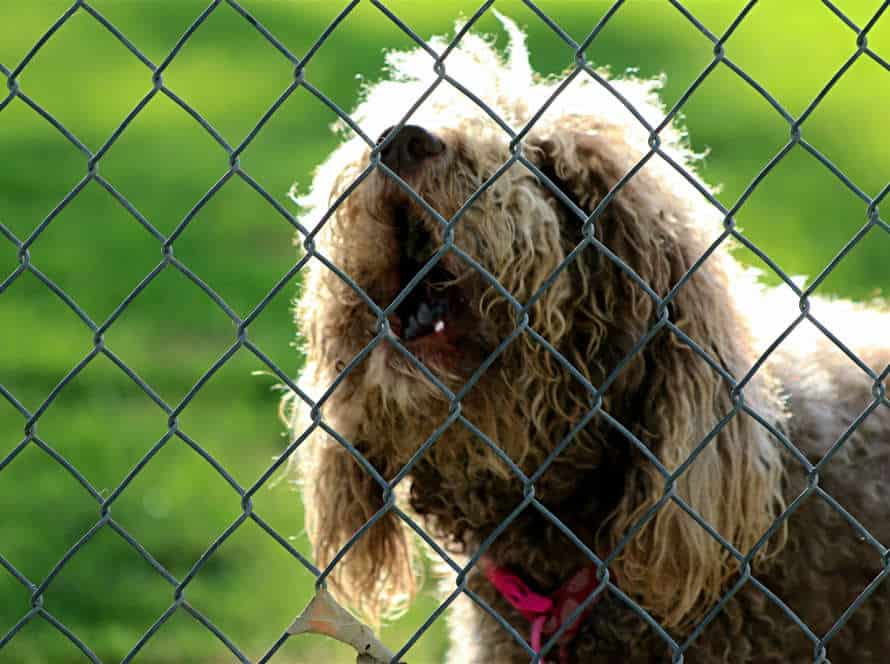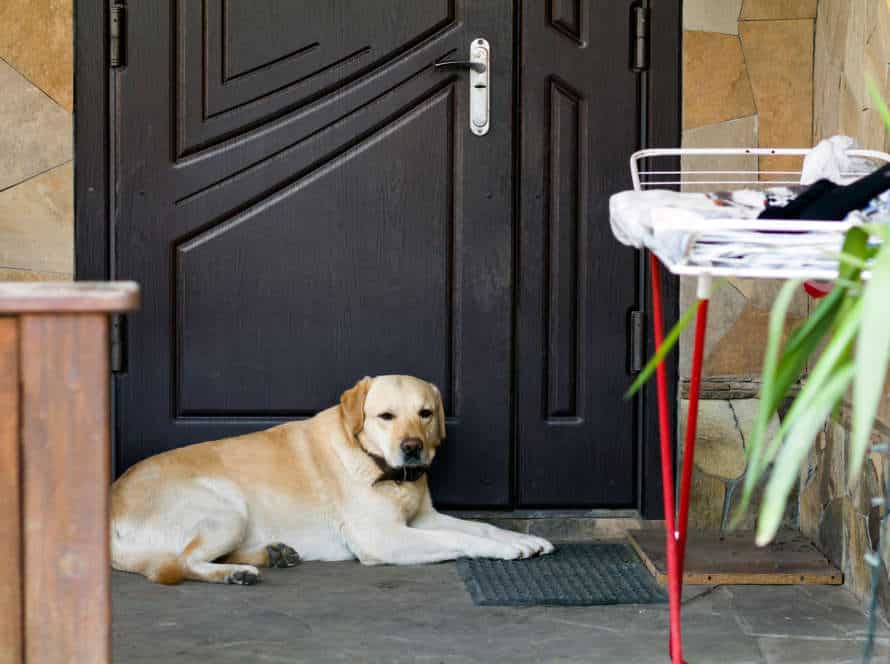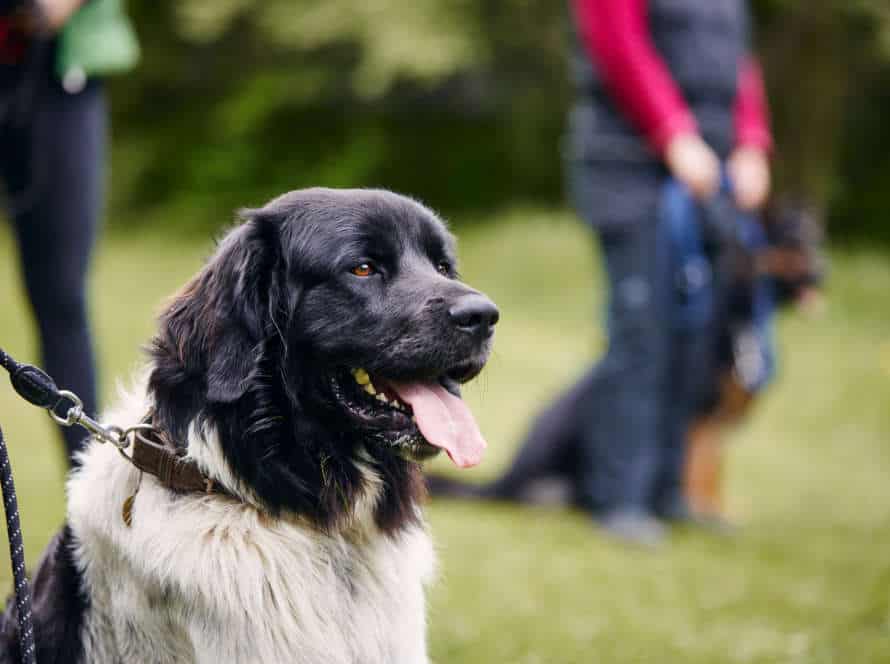How to Help Your Dog Adjust to a New Home or Environment
Adjusting to a new home or environment can be a challenging experience for your furry friend. Here’s how to help them adjust:
- Keep their routine unchanged. Dogs like routine, so keep their feeding, walking, and playtime the same during the transition.
- Give them a designated space. They need a place just for them, where they feel safe and secure – like a crate, dog bed, or area in your home.
- Introduce them slowly. Show your dog the new environment, room by room. This will help them become more familiar and comfortable.
- Reward good behavior. Praise or give treats when your dog behaves, to encourage positive behavior and quick adaptation.
- Exercise and have fun together! Make sure they get plenty of exercise and playtime – this can reduce stress and anxiety.
Pro tip: Be patient with your pup while they adjust. With consistency and love, they’ll be settled in no time.
Understanding Your Dog’s Behavior in New Surroundings
Moving homes can be tough for your pup. Dogs rely on their routine and when it’s changed, it can be confusing for them. Keep an eye out for their behavior to help them adjust. Here are some tips:
- Give them playtime and exercise in the new environment.
- Let them explore and sniff around.
- Provide them with a safe and comfortable space.
- Get them familiar with people and other pets in the area.
- Give them love, affection, and lots of reassurance.
Signs of Stress in Dogs
As a pet owner, it’s important to observe signs of stress in dogs. To make adjusting to a new home or environment easier, be aware of these common signs:
- Refusal or overeating
- Panting, drooling and licking too much
- Aggression or irritability
- Lethargy or restlessness
- Trying to hide or escape
- Excessive barking or whining
- Changes in bowel movements
- Excessive shedding
If you spot any of these, give your dog time to settle in. Gradual exposure and providing familiar objects such as toys or bedding can help too. Pro tip: Ask your vet if worried about your pooch’s behavior.
Types of Stressed Dogs
Dogs can have stress when in new places, like a home. To help, recognize the types of stress.
Behavioral stress has signs like anxiety, aggression, and barking too much.
Environmental stress happens due to being in a new place and can involve panting, pacing, and hiding.
Fear-induced stress is when something scares your dog.
Separation stress is when a dog is alone and shows signs like barking, destruction, and agitation.
Know the type of stress your dog has to help them feel comfortable.
Behavioral Changes to Watch For
When adapting to new surroundings, Dogs may display certain behavioral changes. Knowing how to handle these changes can help your Dog adjust easily. Here are some common ones:
- Anxiety – Panting, pacing, trembling and whining are symptoms of anxiety. To assist your pup in managing anxiety, create a cozy and safe atmosphere.
- Aggression – Dogs can become aggressive if they think their territory is under threat. To prevent aggression, offer them exercise and socialization, create a special space for them and be patient and positive.
- Destructive Behaviour -They may chew or scratch things for boredom or anxiety. To reduce this, give them enough exercise and mental stimulation, give them toys and chew bones, and keep belongings out of reach.
- Loss of Appetite – A sudden change in environment can make them lose their appetite. To encourage them to eat, try their favorite food, add broth to their water or offer smaller meals more often.
By spotting these behavioural changes and providing the right care and attention, you can help your Dog settle into a new environment comfortably.
Preparing Your Dog for the Move or Environment Change
Moving? Stressful! Our pet buddies included. Planning ahead is essential if you’re changing your pet’s home. Help them adjust to the new environment! Here are some strategies to make the relocation successful and help them get used to the new environment.
Gradual Exposure to New Surroundings
Gradually expose your pooch to fresh surroundings for prepping them for a relocation or environment change. This’ll guarantee they settle in well to their new house and environment. These are the moves to follow:
- Show your pup new sights, sounds and smells slowly.
- Use positive reinforcement such as treats and rewards to encourage them to explore their new home.
- Let them become familiar with the layout of their new house and give them their own space.
- Stick to their regular routine as much as you can, like mealtimes and exercise.
- Offer them plenty of love, attention and assurance during the adapting period.
By doing these, your pup will feel relaxed and cozy in their new environment.
Pro Tip: Consult your vet if your pup is having a hard time adjusting, they may advise extra techniques or treatments to help with the transition.
Introduce Familiar Smells and Objects
To help your pup adjust to a new home or environment, bring familiar smells and objects! These can give your dog a sense of comfort and stability. Here are some tips:
- Introduce familiar smells. Bring your dog’s bedding, toys, or a piece of your clothing – something with a familiar scent.
- Take walks in the new area. Dogs rely on their sense of smell. Walks will give them lots of chances to explore.
- Keep to regular routines. Meal times and walks should stay the same.
- Be patient during the transition. Show your pup understanding and love.
Establishing a Routine
Make a routine to help your pup adjust to a new home or environment. Here’s how:
- Stick to a timetable. Keep as many of your pup’s habits the same, like meal times, walks, and playtime. It’ll give them a sense of security.
- Let them explore gradually. Let them sniff and see the new space. That’ll make them more at ease.
- Create a safe zone. Have a crate, room, or corner with their bed and toys. That way they’ll feel secure.
- Stay patient and calm. Dogs respond to your emotions. Reward good behavior and ignore bad. That’ll help them understand what’s expected of them.
Techniques for Helping Your Dog Calm Down in New Environment
Your pup may feel overwhelmed or scared when they move to a new home. To make it easier, you can use certain techniques. Here are some of them!
- Give your dog time to settle in. Let them explore their new environment, but don’t push them to do anything.
- Provide a safe and comforting space for them to relax. Make sure they have their favorite toys, treats, and bed.
- Encourage positive behavior with rewards. Give them treats or praise when they act appropriately.
- Spend quality time with them – take them for walks, play with them, and give them lots of love.
With patience and understanding, you can help your dog feel at home in no time!
Utilizing Dog Crate
Using a dog crate is helpful to aid your pup in calming down in a strange setting or new home. Here’s how you can use it:
- Pick an appropriately sized crate – big enough for your pup to stand, turn and lie down.
- Put comfy bedding & water inside.
- Introduce the crate to your dog with treats & toys – encouraging them to explore & sniff around.
- Close the door for short periods, increasing the time as your pup becomes accustomed to it.
- Set up a routine for crate time – like feeding & treats in the crate, or using it for naps & quiet time.
Crate training takes time, patience & consistency. But it’s a great way for your pup to feel secure in a new environment.
Give Your Dog Plenty of Exercise
Exercising your pup is essential for their overall health and well-being. Not only does it help keep a healthy weight, but it also offers mental stimulation and can stop bad behavior.
Here are some tips to soothe your pooch in a strange atmosphere or adjust to a new house:
- Begin with brief strolls around the new area or environment to get them used to the novel sounds and smells slowly.
- Give them heaps of compliments and treats when they act nicely in new environs to support good behavior.
- Give your pup a known toy or item from their old home for solace.
- Create a daily routine for physical activity and playtime to promote stability and reduce stress.
Keep in mind that each dog is one-of-a-kind, so it may take time to find the best techniques to relax your pup or help them adjust to a new setting. Be patient, reliable and give them many cuddles and attention.
Calming Scents and Essential Oils for Dogs
Calming scents and essential oils can help your pup stay chilled in new places and unfamiliar situations. Here are some safe ones that can help reduce doggy anxiety and stress:
- Lavender Oil – soothing and calming.
- Chamomile Oil – reduces anxiety, promotes relaxation.
- Valerian Root Oil – sedative effect, calming.
- Bergamot Oil – calming and can help depression.
- Peppermint Oil – soothes stomach issues.
Remember to dilute the oils and talk to a vet first – especially if your dog is on meds or has health problems.
Training and Socializing in a New Area
Socializing and training your dog in a new environment is important. As soon as you move with your pup, introduce him to the new sights, smells, and sounds. Give him time to explore. When possible, take him to meet other people and animals in the area. This will help him adjust. Training and socializing play a big role in helping your pup settle into a new home or environment.
Reinforcing Basic Commands
Training and socializing your pup in a new place? Reinforcing basic commands is key. Consider:
- Sit – Calm them down when excited. Practice often and reward with treats.
- Stay – Teaches discipline and self-control.
- Come – Very important in a new place with more distractions.
- Heel – Helps control your pup on walks.
Positively reinforce these commands. Your pet will get used to their new environment eventually. Pro-tip: Be patient and avoid punishing.
Training for Specific Environment Situations
Training your pup for certain environmental scenarios can be critical for helping them adjust to a new home or environment. It’s necessary to teach them to accustom to various settings, like crowded streets, bustling places, and novel surroundings.
Here’s how to train your dog for specific environmental situations:
- Begin instructing them in a peaceful and well-known place.
- After some sessions, train in a slightly crowded spot such as a park or a quieter street.
- Gradually expose them to busier and more packed areas.
- Give treats and positive reinforcement to reward obedient conduct.
- Observe your dog’s behavior and attempt to figure out what elicits stress or fearful behavior.
- Consistency and patience are important during training. Don’t forget to give treats for good behavior and provide positive reinforcement.
Tip: It’s also necessary to socialize your dog with other doggos, critters, and people, to assist them in adjusting quicker to a new home or environment.
Socializing with Other Dogs and People in the Area
Socializing your pup is key for their contentment and adjustment to their environment. Here are some tips to follow:
- Take short walks – Get your pup accustomed to the sights, scents and sounds of your neighbourhood with a few brief strolls.
- Introduce to other dogs – Introduce your pet to other friendly dogs in the area with the same size and energy level.
- Reward good behaviour – Give treats and praise to your pup when they interact with others in an appropriate way.
- Enlist a pro – Hire a dog trainer or expert to help your dog become more comfortable and self-assured in social settings.
- Remember – Always supervise your pup when introducing them to new people and animals. Don’t force them into any situation that might make them scared or uneasy.
Caring for Your Dog’s Health in a New Environment
Moving can be stressful for your pup. Ensure your pooch is comfortable and healthy in their new home by providing vet care, nutrition and exercise. Plus, give them time for mental stimulation. Learn more about helping your dog adjust to a new environment.
Scheduling Vet Check-Ups
Regular vet check-ups are key for keeping your pup fit and stopping potential health problems. If you just moved house, you should quickly arrange an appointment with your vet to make sure your dog is settling in nicely.
At the appointment, the vet will do a complete physical evaluation to check your pup’s weight, temperature, and heart rate. They may also carry out any lab tests needed. Vaccines will be updated and any health worries discussed.
Not only does this stop any issues becoming more serious, but it also gives your pup peace of mind in their new home. By keeping up your dog’s health routine, they will feel safe and secure wherever they go.
Top Tip: Establish a good relationship with your vet so that your dog’s wellbeing is always a priority.
Monitoring Your Dog’s Diet
Watching what your pup consumes is essential for their health. Especially when relocating! Here are a few tips to help your doggo adjust:
- Keep to the same feeding routine. This will make them feel comfortable. Same time, same place.
- Don’t switch their diet suddenly. Introduce any new food gradually.
- Track your pup’s weight. Changes in environment can affect this. Adjust their diet as needed.
- Speak to your vet. If you spot any changes in their appetite, weight or behavior, get professional advice.
By monitoring their diet and keeping to a routine, your pup can adjust to a new home and stay healthy.
Keeping a Close Eye on Their Health and Wellness
Moving to a new home can be stressful for your pup. So, keep an eye on their health and wellness during and after the transition. Here are some tips to help your dog adjust:
- Keep their routine the same. Feeding, walking, and exercising at regular times can make them feel secure.
- Pay attention to their eating habits. Some dogs might not eat much or have digestive issues in times of stress.
- Watch for signs of anxiety or discomfort. Excessive barking, hiding, pacing, and aggression can indicate anxiety.
- Keep up with vet visits. Ensure that their vaccinations are up to date and they have regular check-ups.
- Pro tip: Give your pup lots of love, affection, and positive reinforcement during the adjustment period. That will help them feel secure in their new environment.
Frequently Asked Questions
1. How long does it take for a dog to adjust to a new home?
It varies by dog, but it usually takes a few weeks for a dog to adjust to a new home. During this time, it’s important to establish a routine and provide plenty of love and attention to help your new pet feel comfortable.
2. How can I help my dog feel comfortable in a new environment?
Introduce your dog gradually to a new environment, beginning with just one room at a time. Keep familiar items, such as bedding, toys, and food, nearby to give your dog a sense of comfort and security. Create a routine and stick to it to help your dog feel secure and confident in their new surroundings.
3. What are some signs that my dog is anxious or stressed in a new environment?
Signs of anxiety or stress in a dog may include excessive barking, pacing, panting, or hiding. Some dogs may also become aggressive or destructive when feeling anxious. Be patient and calm, and provide plenty of reassurance and positive reinforcement to help your dog adjust.
4. Should I crate my dog in a new environment?
Crating can be an effective way to help your dog feel safe and secure in a new environment. Make sure your dog has enough space, food, and water while in the crate and that they have plenty of breaks to stretch their legs and relieve themselves.
5. How can I help my dog adjust to a new family or other pets?
Introduce your dog gradually to other pets or family members, giving them plenty of time to get to know each other before allowing unsupervised interactions. Positive reinforcement, such as treats and praise, can help encourage good behavior and make the adjustment period smoother.
6. What should I do if my dog still seems anxious or stressed after a few weeks?
If your dog is still experiencing anxiety or stress after a few weeks, consult with a vet or a professional dog trainer for further guidance. They may be able to recommend additional techniques or strategies to help your dog adjust and feel more comfortable in their new environment.


